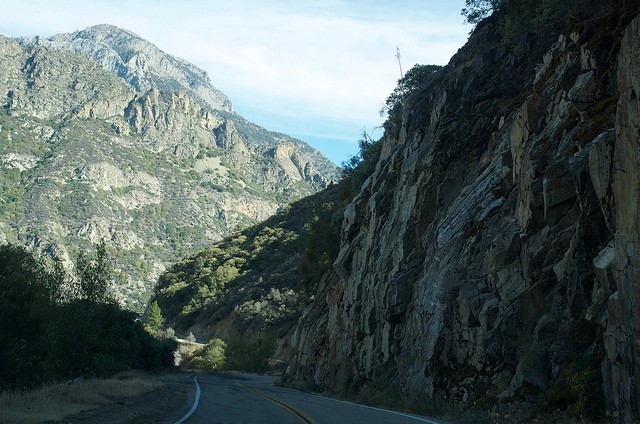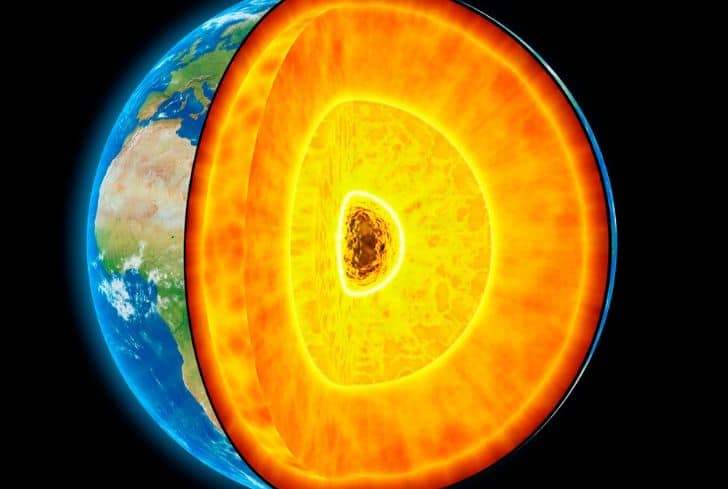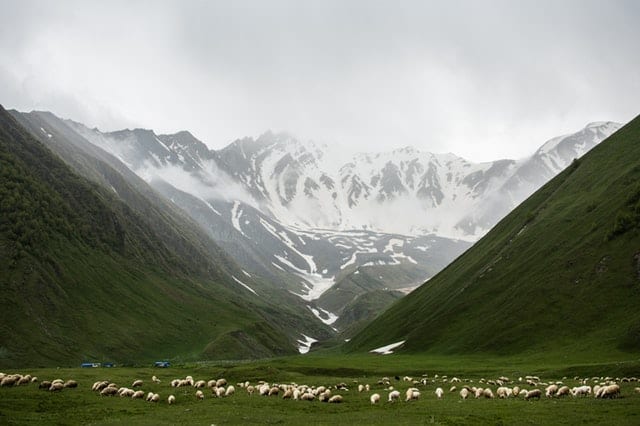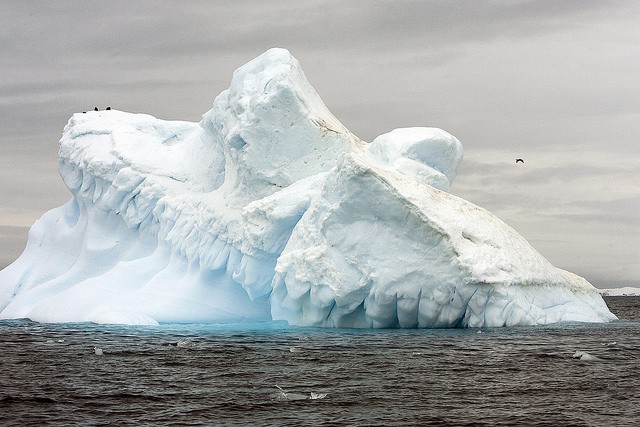Metamorphic Rocks: Formation, Types and Examples

Metamorphic rocks are the rocks formed from other rocks. They are sedimentary or igneous rocks that have undergone changes as a result of extreme pressure and heat. The name defines their formation whereby ‘meta’ means change and ‘morph’ means ‘form.’ Hence, metamorphic rocks are those whose forms have been changed through a geological process such as large tectonic movements and magma intrusions.
The changes that occur in the process of metamorphism are because of the changes in the physical pressure and temperature, which alters the mineral composition and texture of the pre-existing igneous and sedimentary rocks to form metamorphic rocks. So, all metamorphic processes involve solid-state changes in the minerals.
As per Wikipedia,
“”Metamorphic rocks arise from the transformation of existing rock types, in a process called metamorphism, which means “change in form””. The original rock (protolith) is subjected to heat (temperatures greater than 150 to 200 °C) and pressure (1500 bars), causing profound physical and/or chemical change. The protolith may be a sedimentary rock, an igneous rock or another older metamorphic rock.“
Formation of Metamorphic Rocks
Large tectonic movements and magma intrusions create earth movements and subsequently cause the pre-existing rocks to move and shift. In turn, the movements subject other rocks buried deep below the earth’s surface to extreme pressure and heat which contributes to changes and assemblage of the rocks texture, mineralogy, and chemical composition.
The changes typically modify the rock’s crystal type and sizes and may also subject the rocks to further radical changes. Metamorphic processes come about at heats between 150° and 795° Celsius with the capability of producing high energy that can break and reform the chemical compositions of the rocks. Pressure from the overlying rocks also increases the process of transformation.
The heat from magma and friction along fault lines is the major contributor of the heat that brings about the rock changes. Even though the rocks do not actually melt, some mineral groupings redistribute the elements within the original minerals to form new compositions of minerals that are more stable at the new temperatures and pressures.
The intense temperature gradient between the country rocks and the surrounding molten magma is the driving factor for the changes in texture and chemical composition. As a result, the original rocks are transformed into metamorphic rocks. Metamorphic rocks formed from direct magma heating and intrusions are termed as thermal or contact metamorphic rocks.
Those formed as a result of widely distributed pressure and temperature changes induced by tectonic movements are known as regional metamorphic rocks. Metamorphic rocks are largely grouped into foliated and non-foliated rocks.
Types of Metamorphic Rocks
There are two main types of metamorphic rocks. These are Foliated metamorphic rocks and Non-foliated metamorphic rocks.
1. Foliated Metamorphic Rocks
Foliated metamorphic rocks are formed from direct exposure to pressure and heat. They are the most vital and largest groupings of metamorphic rocks. Foliated metamorphic rocks have four distinguishable types of aligned textures and they normally have a banded or layered appearance.
Examples include slate, gneiss, phyllite, and schist. Non-foliated are formed as a result of tectonic movements or direct pressure which makes their formation highly dependent on their pre-existing conditions.
2. Non-foliated Metamorphic Rocks
Non-foliated metamorphic rocks do not have a banded or layered appearance. The extensively known example of non-foliated metamorphic rock is a marble. Other examples include quartzite, hornfels, and novaculite.
Examples of Metamorphic Rocks
There are hundreds of metamorphic rocks across the face of the earth with different compositions and textures. The best way of learning their various types is by handling and seeing them in reality. Here is a list of the most known types of metamorphic rocks.
1. Hornfels
Hornfels is a fine-grained metamorphic rock formed by the action of heat on clay rocks, known as contact metamorphism. It has a non-foliated metamorphic rock that has no specific composition. Hornfels are heated when near a heat source such as a sill, dike, or magma chamber.
2. Amphibolite
Amphibolite is non-foliated metamorphic rock that is composed chiefly of plagioclase and amphibole (hornblende), frequently with very little quartz. Amphibolite forms under conditions of directed pressure and high viscosity through the process of recrystallization.
3. Gneiss
Gneiss is a foliated metamorphic rock made up of granular mineral grains. It contains a lot of feldspar minerals and bands of quartz and sometimes mica. It normally has a banded appearance and is sort of laminated. It appears similar to granite.
4. Novaculite
Novaculite is a hard, fine-grained, dense, siliceous rock. It is non-foliated metamorphic rocks known to break with a conchoidal fracture. It forms in marine environments from sediment deposits where organisms like diatoms plentiful in water – the single-celled algae that secret hard shells made up of silicon dioxide.
5. Marble
Marble is among the non-foliated metamorphic rocks produced from the metamorphism of dolostone or limestone. It takes high polish and is often used for sculpture and as building material. Marble is mainly composed of calcium carbonate.
6. Phyllite
Phylite is mostly made up of very fine-grained mica and sometimes chlorite. It is a foliated metamorphic rock and its surface is generally lustrous and in certain cases wrinkled. Geologists say it represents the intermediate state between slate and schist.
7. Lapis Lazuli
Lapis Lazuli is one of the rarest metamorphic rocks, especially because of its blue color. Thus, Lapis Lazuli is famously known for its blue gem material and they are used for decoration and to make beads in the form of round small stones.
8. Quartzite
Quartzite is a hard metamorphic rock consisting essentially of interlocking quartz crystals. It is a non-foliated metamorphic rock formed during the metamorphism of sandstone.
9. Slate
Slate is a low-grade and fine-grained metamorphic rock that can be separated into thin pieces. It is a type of foliated metamorphic rock that is produced by the metamorphism of shale. Slates are predominantly realigned clay minerals.
10. Schist
Schist is a foliated metamorphic rock that is well developed and contains substantial amounts of mica. Because of the high concentrations of mica, schist can readily split into thin layers.
Geologists say it represents the intermediate metamorphic grade between gneiss and phyllite. Sometimes schist might contain high amounts of chlorite.
11. Soapstone
Soapstone is a metamorphic rock primarily made up of talc with a soapy feel and varying amounts of other minerals such as chlorite, pyroxenes, micas, carbonates, and amphiboles. It is also a highly dense, soft, and heat resistant rock with high heat capacity. Because of its properties after metamorphism, it is considered highly used in a wide range of artistic and architectural works.






